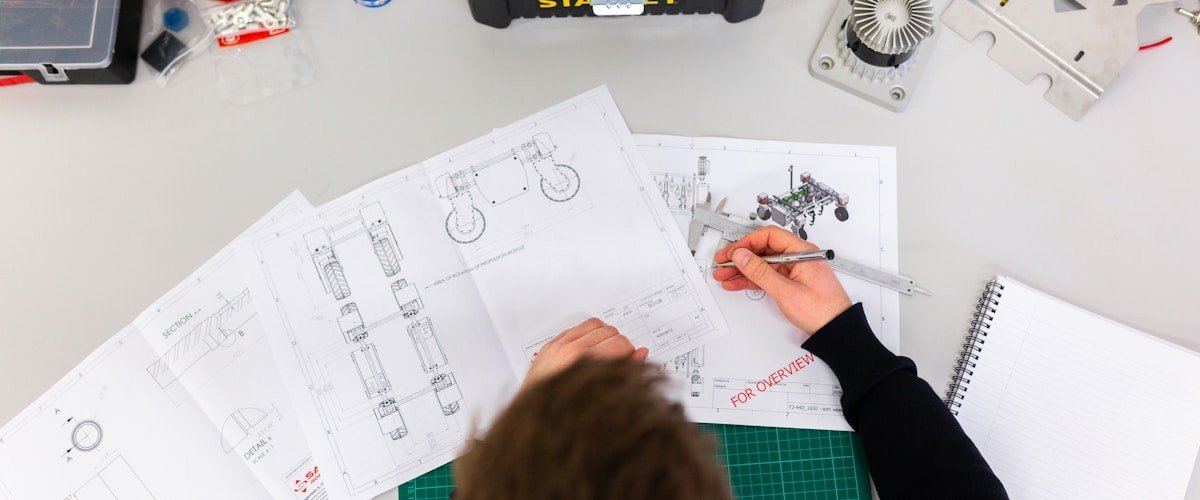Gate Valve vs Globe Valve: Key Differences Explained

Choosing between a gate valve vs globe valve shapes how a system starts, stops, and controls flow. The two look similar from the outside, yet their internal geometry leads to very different behavior. Good results come from matching that behavior to the service, pressure class, media, applications, and control expectations.
The design details matter. Small differences in seat angle, stem thrust, or trim shape dictate pressure drop, susceptibility to cavitation, and how well a valve tolerates partial opening. With the right choice, systems run quieter, actuators last longer, and maintenance windows are shorter.
What makes gate valve vs globe valve different at a glance
-
Gate valve: A flat or slightly wedge-shaped gate moves perpendicular to flow, seating against parallel or inclined surfaces. The flow path stays nearly straight when fully open.
-
Globe valve: A plug or disc moves onto a ring seat. The flow path changes direction inside the body, and the plug position gives repeatable throttling.
A gate valve excels at full open or full closed isolation with low pressure drop. A globe valve is the workhorse for throttling and control where a predictable flow characteristic is needed.
Internal geometry and flow behavior

Think of a gate valve like a drawbridge inside a straight pipe. When open, the gate fully clears the bore, and the moving fluid sees minimal disruption. This yields high Cv values for a given line size and low head loss across the valve. In partially open positions, though, the gate’s sharp edges create high velocity jets and uneven flow paths that erode seats and vibrate the wedge. That is why gate valves are rarely recommended for throttling.
A globe valve introduces a controlled restriction by design. The fluid turns to pass through the seat area, creating a vena contracta just downstream of the plug. The plug shape and seat geometry determine the valve’s flow characteristic and how it handles energy dissipation. While the pressure drop is higher than an open gate valve at the same flow, the globe valve’s partial openings are stable and repeatable.
Two implications follow in a bi-directional flow system:
- Cavitation risk shifts location. In globe valves, the lowest pressure point sits near the seat and plug. Designers use multi-stage trims, hardened materials, and specific plug contours to control collapse of vapor bubbles. Gate valves avoid this region in full open position but suffer cavitation when misused for throttling.
- Actuation needs differ. Globe valves need significant thrust over the entire travel range because the plug remains in the flow. Gate valves need high thrust only near seating and unseating, with relatively low running torque mid-stroke.
A side-by-side comparison
| Attribute | Gate Valve | Globe Valve |
|---|---|---|
| Primary function | Isolation on full open/full closed | Throttling and isolation |
| Flow path | Straight through when open | Direction change across seat |
| Typical Cv for 4 in Class 150 | ~350 to 450 | ~110 to 180 |
| Pressure drop when open | Low | Moderate to high |
| Throttling suitability | Poor to fair (erosion risk) | Good to excellent |
| Shutoff tightness | Good with proper seating; resilient wedge can reach bubble-tight in water services | Very good; metal seats common, tight shutoff with proper trim |
| Cavitation control | Limited; not intended for control service | Established trims to manage cavitation and noise |
| Disc/closure | Solid, flexible, or split wedge; knife gate variants for slurries | Plug/disc options: parabolic, needle, cage, equal-percentage |
| Body patterns | Rising stem OS&Y, non-rising stem; bolted or pressure seal bonnet | Tee, angle, and Y-pattern; bolted or pressure seal bonnet |
| Actuation | Handwheel, gearbox, electric; high seating thrust | Handwheel, gearbox, pneumatic, electric; continuous throttling thrust |
| Maintenance profile | Seat and wedge erosion if throttled; packing adjustments | Seat ring wear tied to throttling; packing load sensitive to flow direction |
| Cost trend | Lower initial cost for same size and class | Higher initial cost; lifecycle benefits in control service |
| Typical uses | Line isolation, water and wastewater mains, fire protection, pipeline block valves | Steam conditioning, cooling water control, blowdown, sampling, gas or liquid control points |
Values vary by manufacturer and trim selection, but the patterns above hold across most standards-compliant designs.
Critical design features and terminology

-
Gate silhouettes: Solid wedge, flexible wedge, split wedge. The flexible wedge helps compensate for seat misalignment from thermal cycles. Resilient seated gates (elastomer-coated wedge) are common in water distribution for very tight shutoff.
-
Globe body patterns: Tee pattern offers the highest pressure drop and best control authority. Y-pattern reduces pressure drop and is popular in power plants where high pressure and temperature demand a robust but slightly straighter flow path. Angle pattern redirects flow 90 degrees and can simplify piping while allowing good throttling.
-
Backseat: Many gate and globe valves include a backseat in the bonnet to isolate packing during full open maintenance. It is a temporary service feature and not a substitute for proper isolation procedures.
-
Seat and trim materials: 13Cr (Type 410) trim, Stellite hardfacing, or corrosion resistant alloys like 316/316L are typical. Hardfaced seats resist wire-draw and erosion in throttled services.
-
Bonnet styles: Bolted bonnet for general duties; pressure seal bonnet for high pressure and temperature where body-bonnet joint loads grow with pressure.
Codes and standards at play
-
Design basis: ASME B16.34 for pressure-temperature ratings and design rules.
-
Face-to-face: ASME B16.10.
-
End connections: ASME B16.5 for flanges, B16.25 for butt weld ends, MSS SP-97 for integrally reinforced outlets.
-
Marking and identification: MSS SP-25.
-
Testing: API 598 or ISO 5208 for pressure testing.
-
Product standards: API 600 and API 603 for gate valves in steel; API 602 for forged steel small-bore gate and globe valves; API 623 for steel globe valves.
Working within these references keeps envelope dimensions, pressure ratings, and testing methods consistent across suppliers.
Throttling and control performance

Globe valves shine where the valve position is used to control flow. The plug and seat geometry defines how flow changes with stem travel.
- Quick-opening trim: Large flow change near initial movement, then tapering. Common for on-off control.
- Linear trim: Flow changes linearly with travel. Good for proportional control with constant drop.
- Equal-percentage trim: At small openings, small changes in travel produce small changes in flow; at larger openings, flow increases more rapidly. Useful when system pressure drop varies with flow, such as in many process loops.
Noise and cavitation come from rapid pressure recovery at the vena contracta. Advanced globe trims use multi-stage pressure drop, slotted or drilled cages, and hardened materials to spread out energy dissipation. Cavitation index (Kc) and vendor-specific maps help select a trim that stays out of the damage zone for the intended flow range.
When considering gate valve vs globe valve, gate valves, by contrast, lack a controlled flow path during partial opening. The gate edge produces unstable jets. Erosion, vibration, and wire-draw at the seat are common when a gate valve is used to throttle even for short periods.
Installation and flow direction
Orientation and flow direction, particularly in a bi-directional context, matter more for globe valves than for gates.
-
Gate valve orientation: Common practice prefers stem vertical for smooth operation and easier packing maintenance. Gate valves are generally non-directional in terms of body arrow, though many have a preferred flow direction to minimize wear on the downstream seat.
-
Globe valve flow arrow: Most globe valves include an arrow. Flow under the seat or over the seat affects packing load, shutoff, and thermal behavior.
- Flow under seat reduces opening torque and helps clean the seat, but increases packing load when closed.
- Flow over seat reduces packing load during closure and can aid in high temperature services where thermal expansion could seize a plug.
Y-pattern globe valves often are installed with the stem at an angle that simplifies actuator alignment and reduces debris accumulation.
Actuation and stem mechanics

-
Handwheel and gearbox: Manual actuation remains common. Globe valves often need gear reduction at larger sizes because of the continuous thrust demand. Gate valves need gearboxes where seating thrust is high or in large diameters where the wedge mass becomes significant.
-
Electric actuators: Provide precise positioning with feedback for control systems. Globe valves pair well with modulating electric actuators in various applications due to linear or equal-percentage trims. Duty cycle rating and heat dissipation need attention.
-
Pneumatic actuators: Widely used on globe control valves for fast response. Diaphragm or piston types deliver high thrust in compact packages.
-
Stem and yoke: Rising stems give visual position indication and reduce contamination risks. OS&Y (outside screw and yoke) keeps threads out of the fluid. Non-rising stem designs on gate valves save space but hide stem position.
Packing selections range from braided graphite to PTFE-based sets, often with live-loading for reduced maintenance under cycling.
Sizing and pressure drop: a practical example
Cv expresses the flow capacity of a valve. For water at 60°F, flow in gpm equals Cv times the square root of differential pressure in psi. Rearranged, differential pressure equals the square of flow divided by Cv squared.
Example: A 4 inch valve in a cooling loop carries 300 gpm of water. Two options are under review.
- 4 inch gate valve with Cv 380
- 4 inch globe valve with Cv 150
Calculate differential pressure:
- Gate valve: ΔP = (300/380)² ≈ 0.62 psi
- Globe valve: ΔP = (300/150)² ≈ 4.0 psi
Over a continuous duty cycle, that difference affects pump head and energy costs. If the process needs throttling, though, the globe valve’s behavior at partial openings will prevent erosion and provide predictable control. The control requirement often outweighs the extra pressure drop.
Velocity guidelines also help. Many plant specifications target 3 to 10 ft/s in liquid lines to manage erosion and noise. Throttled valves are checked against cavitation indices and noise predictions; vendors supply data by trim type and opening.
Materials and corrosion considerations
-
Bodies and bonnets: carbon steel, LCC for low temperature, stainless steel for corrosion resistance, and chrome-moly alloys in high temperature service.
-
Stems: 13Cr hardened or nitrided stainless to resist galling. Fine surface finish contributes to packing life.
-
Seats and plugs: Stellite overlays for steam and erosive services. Elastomeric seats in resilient wedge gate valves for municipal water, with EPDM or NBR depending on media.
-
Fasteners and gaskets: For bolted bonnets, spiral wound gaskets with graphite filler are common. Pressure seal designs use metal pressure seal rings that energize under pressure.
Media compatibility, chloride content, temperature, and pressure cycling dictate metallurgy. For sour service, NACE MR0175 requirements may apply.
Where each valve type excels
Gate Valves
- Pipeline isolation where minimal pressure drop matters
- Full-bore applications that require pigging
- Fire protection systems using resilient seated gates
- Services where the valve stays either fully open or fully closed for long periods
Globe Valves
- Steam lines needing throttling or blowdown control
- Cooling water modulation to heat exchangers
- Gas control where fine adjustment and stability are needed
- High pressure or high temperature service with Y-pattern bodies and hardfaced trims
Knife gates deserve a special mention. They are a variant of gate valves intended for slurries, pulps, and viscous media. Not a substitute for a wedge gate or a globe valve in clean services, but very effective in solids-laden flow.
Cost, lifecycle, and maintenance

Initial purchase price for a globe valve often exceeds a gate valve in the same size and class, making it crucial to consider gate valve vs globe valve based on application needs and specific applications. Lifecycle costs can favor the globe valve in any system that throttles regularly.
Key factors:
-
Seat wear: Gate valves used for isolation show long seat life. If forced to throttle, they wear quickly. Globe seats and plugs are designed to handle throttling and can be refurbished with lapping or replaced.
-
Packing longevity: Lower stem side load in properly oriented globe valves helps. Live-loading and correct packing selection pays off more on globe valves due to duty cycles with frequent movement.
-
Actuator sizing: Globe valves need actuators sized for continuous thrust across travel. Correct sizing avoids stalling near tight control points and prevents overloading gear trains.
Inventory planning often uses gate valves for the bulk of isolation duties and a smaller set of globe valves at control points. That split moderates both cost and complexity.
Common mistakes and how to avoid them
-
Using a gate valve for throttling. Short-term throttling seems harmless, but the resulting vibration and jetting cause premature seat damage. Specify a globe valve or a control valve when modulation is needed.
-
Ignoring flow direction on a globe valve. Wrong direction can load the packing heavily and increase stem friction or even cause instability under high differential pressure.
-
Closing too fast. Both valve types can contribute to water hammer if actuated rapidly against high velocity liquid. Gear operators, positioners with ramp control, or slow-close specifications reduce risk.
-
Overlooking the actuator duty cycle. Electric actuators on globe valves in modulating service require the correct duty cycle rating and heat dissipation. Under-sizing leads to early failure.
-
Skipping trim hardfacing in erosive service. Steam throttling and slurry exposure demand hardened or specially contoured trims.
Quick selection guide
Ask these questions early in design:
-
Is the valve for isolation only? If yes, gate valve leads.
-
Do you need stable throttling? Choose globe valve.
-
What pressure drop can the system accept? Gate wins on low loss, globe on control authority.
-
What are the media and temperature? Select metallurgy and trim accordingly.
-
How will it be actuated? Confirm thrust, torque, and duty cycle.
-
Any risk of cavitation or noise? Globe with the right trim can manage it.
-
Do codes or plant standards narrow the options? Check ASME, API, and internal specs.
Field tips from commissioning and maintenance teams

-
Exercise isolation valves during outages. A full stroke helps prevent sticking, especially with wedge gates that see infrequent movement.
-
Record stem turns from open to closed. It becomes a quick diagnostic reference for seat wear or stem thread damage later.
-
Verify position when packing is adjusted. On OS&Y designs, never rely on backseat for long-term packing isolation.
-
For globe valves, confirm the installed flow direction matches the intended service temperature and pressure. Over-seat flow can reduce packing stress in hot service.
-
On critical control points, include spare trim kits and packing sets in the initial spares list. Downtime drops significantly when trim can be swapped without waiting on procurement.
A short design scenario
A plant needs an isolation and control solution for a 300 psig saturated steam header feeding several heat exchangers. The header requires block valves at branches and control at each exchanger inlet.
-
Branch isolation: Class 300 gate valves with Stellite-seated wedges, OS&Y, bolted bonnet. Low pressure drop keeps header pressure uniform and the hardfacing tolerates occasional wire-draw during start-ups.
-
Control to exchangers: Class 300 Y-pattern bi-directional globe valves with hardened trims sized for expected turndown, equipped with pneumatic diaphragm actuators and positioners. Equal-percentage plugs handle varying differential pressures across the operating range.
-
Blowdown lines: Small-bore globe valves with needle plugs deliver reliable metering. A consistent plug profile makes tuning the loop straightforward.
This split lets the header run efficiently while providing stable control at each user.
When to consider alternatives
There are cases where neither a gate nor a globe valve is ideal.
-
High-cycle isolation with minimal torque and quick actuation: Ball valves give tight shutoff and low drop, with fast quarter-turn operation.
-
Severe cavitation with wide turndown: Purpose-built control valves with multi-stage trims outperform standard globes.
-
Sticky slurries or fibrous pulps: Knife gates or pinch valves clear the line better than wedges or plugs.
-
Very fine metering at low flow: Needle valves in small bore sizes provide precise adjustment beyond a standard globe plug.
Selecting among these options often comes down to how often the valve moves, how tight the required shutoff is, and how the fluid behaves under changing pressure and velocity.
Get Expert Valve Consultation
Have questions about selecting the right valve for your application? Our team of experts is here to help.
